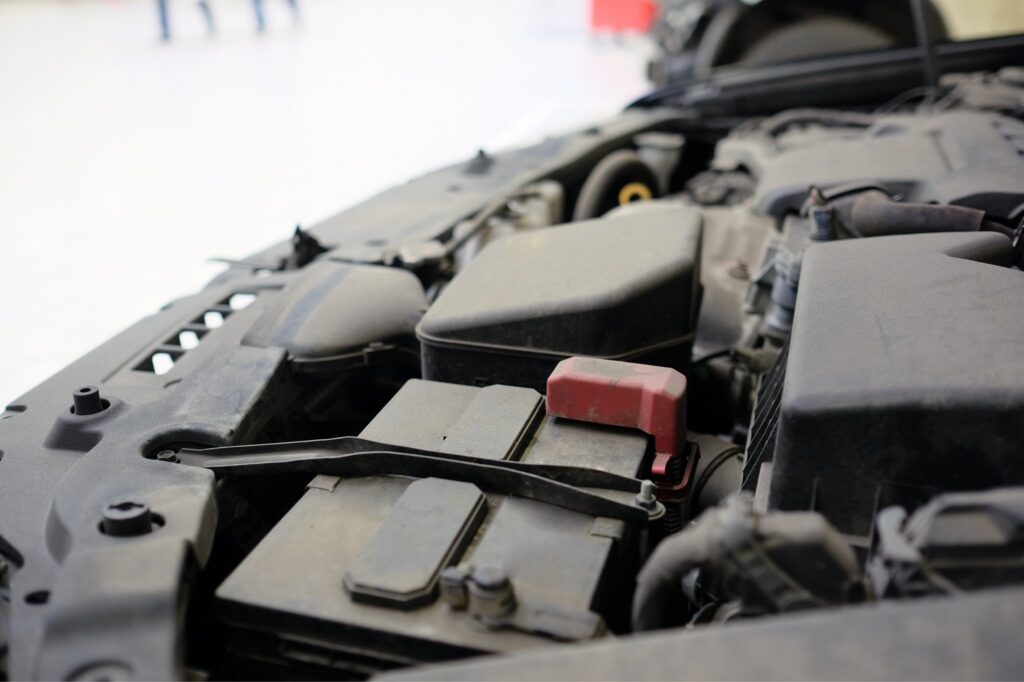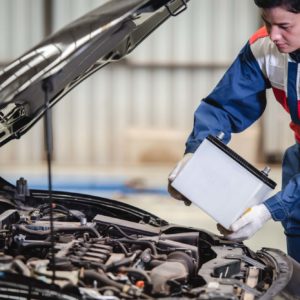Did you know that a damaged car battery is one of the most dangerous components in your vehicle? Not only does it cause stalling and ignition problems, but it could even start a fire.
To prevent such battery issues, it’s important to tie it down to ensure the battery doesn’t move around when driving with a reliable battery hold down.
What Is a Battery Hold Down?
The battery hold down secures the battery in place to prevent it from moving when driving. This prevents damage to the battery, the vehicle, or other equipment situated next to the battery.
They can also prevent batteries from short-circuiting since it can happen when the battery wires make contact with one another.
Benefits of Using a Battery Hold Down

Using battery hold downs will help your battery stay safe, resist vibration, remain efficient, and last a long time.
Battery Safety
A moving battery could get damaged from friction and hitting other parts. In some cases, it could even start a fire if the terminals make contact with a piece of exposed metal. Battery hold downs keep the battery snug and in place, preventing these scenarios.
Vibration Resistance
If the battery is not secured, it can move around and receive more shocks and vibrations than it can handle. That’s not a concern if it’s kept in place by battery hold down, which improves the battery’s resistance to vibrations.
Electrical Connectivity
A properly installed battery hold down ensures the battery’s terminals make proper contact with the vehicle’s electrical system, resulting in a consistent and reliable power supply. Similarly, a constantly shifting battery results in the terminals or wirings loosening or shifting. This could result in charging system issues, starting issues, or drivability problems.
There are a handful of benefits to having a proper connection. These include smooth ignition, better car performance, improved fuel efficiency, and extended lifespan to other components.
Longevity
All the benefits listed above promote a prolonged battery lifespan. The decreased movement, vibration, and improved electrical connectivity all reduce the chances of any possible damage.
Different Types of Battery Hold Downs

There are three battery hold downs types, namely bolts, tie-down straps, and rubber latches. They all keep the battery in place, but do so in different ways.
Battery Hold Down Bolts
Some battery hold downs use bolts, specifically j-bolts, to keep the battery in place. These bolts are made from heavy-duty tempered steel and act as a base clamp to avoid the wires and the cable terminal connection.
Most bolt battery hold down kits have two j-bolts, washers, and some nuts to tie down the battery.
J-bolt battery hold downs usually have one size, so you might need to cut it to ensure it fits under the hood, depending on your battery setup.
Battery Hold Down Tie Down Straps
Tie-down strap battery hold downs use straps to secure the battery in place. Unlike the j-bolt variant, these hold downs are easy to remove because you only have to unstrap them.
Even though they’re easy to detach, tie down strap battery hold downs are secure and don’t make contact with the battery post terminals, reducing the odds of short-circuits.
Battery Hold Down Rubber Latches
Lastly, rubber latch battery hold downs, also known as battery clamps, use rubber latches to keep the battery in place. They are shorter and need to fit into an existing structure like the battery tray or bracket. They’re also easy to install and remove.
How to Pick a Good Battery Hold Down
To pick a good battery hold down, you’ll have to keep in mind the type of battery your car has, the fit/size, and the hold down’s material.
Battery Type
As briefly touched earlier, battery hold downs don’t fit every battery size. This is the reason why some j-bolts need to be cut to fit.
To get the most value out of your money, choose a battery type that lasts a long time to ensure you get to use the hold down the same amount of time.
For example, lithium-ion batteries are known to be durable, as they can last somewhere between two and three years or 300 and 500 charge cycles, whichever comes first.
Fit/Size
The fit is arguably the most important factor when choosing a hold down. If you pick the wrong one, it won’t fit around the battery snugly. So, try to have the hold down tested before committing to the purchase.
However, it shouldn’t matter that much since you can provide your vehicle specifics to the auto part store and they’ll provide you a hold down that fits.
Moreover, having a loose battery hold down is money down the drain. It could also result in severe and costly repercussions.
Material
The most commonly used material for hold downs is plastic, as they’re more affordable than other materials. Some other materials include steel and aluminum alloy. Pick the material that fits your needs.
Effects of a Loose Battery Hold Down
A loose battery hold down means the car battery is susceptible to moving around during drives, which could potentially result in fires or short circuits.
Potential Fire Hazard
As mentioned, a loose car battery is a potential fire hazard because there’s a chance the positive and negative terminals will make contact with a piece of exposed metal. All it takes is brief contact for damage to occur.
The risk of a fire happening depends on your driving habits. For example, if you’re one to frequently drive over potholes or go off-road, there’s a chance a loose battery moves around under the hood.
Short Circuits
An unsecured battery puts added tension on the battery cables, leading to short circuits. This could result in stalling or overheating, which can emit sparks, causing a fire or electric shocks.
How Often Should I Check the Battery Hold Down?
Check the state of your battery hold downs at least four times a year. If you want to err on the side of caution, you can also pop the hood open before you take your car out for a spin.
Checking doesn’t take long, so it’s ideal to inspect every time you take your car to its seasonal checkup.
Any information provided on this Website is for informational purposes only and is not intended to replace consultation with a professional mechanic. The accuracy and timeliness of the information may change from the time of publication.






































